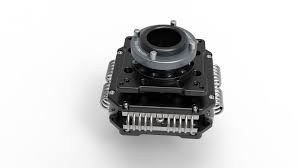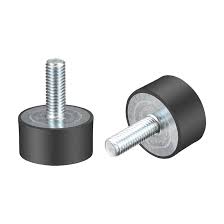Seismic isolation structures have become an increasingly popular method for enhancing building spring vibration isolators safety in earthquake-prone areas. By implementing these innovative structures, engineers and architects are able to significantly reduce the vulnerability of buildings to seismic forces, thus protecting both infrastructure and human lives. In this paper, we will explore the benefits and challenges of implementing seismic isolation structures for enhanced building safety.
Seismic isolation is a method used to reduce the impact of earthquake forces on buildings and structures. This is achieved by incorporating isolator devices at the base of a structure, which allow the building to move independently of the ground motion. This results in significantly reduced forces being transferred to the building during an earthquake, thereby enhancing its safety and minimizing the potential for structural damage. Seismic isolation structures are typically implemented in regions prone to seismic activity, where the risk of earthquakes poses a significant threat to the safety and stability of buildings. By incorporating seismic isolation technology into building design, engineers are able to enhance the resilience of structures, ultimately reducing the potential for collapse or extensive damage during an earthquake. The implementation of seismic isolation structures involves careful engineering and design considerations to ensure that the isolator devices are appropriately integrated into the building foundation. Additionally, thorough analysis and testing are conducted to verify the effectiveness of the seismic isolation system in reducing the impact of seismic forces on the structure. Overall, the implementation of seismic isolation structures plays a crucial role in enhancing building safety and mitigating the potential risks vibration isolators hvac associated with seismic events. By incorporating this technology into structural design, buildings can be better equipped to withstand the forces of an earthquake, ultimately contributing to the overall resilience and safety of communities in seismically active regions.
Seismic isolation structures involve incorporating isolator devices at the base of a building to allow it to move independently of the ground during an earthquake. This reduces the hvac vibration isolators forces transferred to the building, enhancing safety and minimizing potential structural damage. This approach is crucial in earthquake-prone regions. It requires careful engineering, design, and testing to ensure the effectiveness of the seismic isolation system. Implementing seismic isolation structures plays a critical role in enhancing building safety, resilience, and community protection in seismic zones.
Understanding Seismic Isolation Structure: A Complete Guide

Understanding Seismic Isolation Structure: A Complete Guide is a comprehensive resource that explains the principles and applications of seismic isolation in building and infrastructure design. The book covers the theoretical background of seismic isolation, including concepts such as base isolation and the behavior of isolated structures during earthquakes. It also provides practical guidance on the design, construction, and maintenance of seismic isolation systems. The guide is suitable for engineers, architects, and students looking to gain a thorough understanding of seismic isolation technology and its role in mitigating earthquake damage.
The Importance of Seismic Isolation Structure in Modern Infrastructure

Seismic isolation structures are crucial components in modern infrastructure, especially in regions prone to earthquakes. These structures are designed to absorb and dissipate the energy generated by seismic shocks, thus mitigating the impact on buildings and infrastructure. By incorporating seismic isolation technology into buildings, bridges, and other critical infrastructure, the potential for serious damage and collapse during an earthquake is significantly reduced. This not only helps to protect human lives, but also minimizes economic losses and the disruption of vital services. Seismic isolation structures are particularly important in densely populated urban areas, where the risk of earthquake-induced damage is high. Additionally, as urbanization continues to expand into seismically active regions, the demand for seismic isolation technologies becomes increasingly vital. Overall, the incorporation of seismic isolation structures in modern infrastructure plays a crucial role in enhancing the overall resilience of buildings and critical facilities in earthquake-prone regions. It is an essential aspect of ensuring the safety and functionality of infrastructure in the face of seismic events.
Designing Seismic Isolation Structure for Maximum Effectiveness

Designing seismic isolation structures for maximum effectiveness involves carefully analyzing the specific site conditions, anticipated ground motions, and the structural requirements of the building. Engineers use advanced software and modeling techniques to evaluate different isolation systems and determine the most suitable solution for the project. The goal is to minimize the transmission of seismic forces to the building and provide maximum protection for occupants and equipment. This involves considering factors such as the type of isolators, their placement within the building, and the overall stiffness and damping characteristics of the system. Additionally, testing and quality control are essential to ensure that the design will perform as intended in the event of an earthquake. Overall, designing seismic isolation structures for maximum effectiveness requires a comprehensive understanding of both structural engineering principles and seismic hazard mitigation strategies.
The Future of Seismic Isolation Structure Technology

Seismic isolation structure technology is constantly evolving to improve the performance and safety of buildings and infrastructure during seismic events. The future of this technology is focused on developing more advanced materials and engineering techniques to enhance the effectiveness of seismic isolation systems. This includes research into new types of isolation bearings, such as lead-rubber bearings and friction pendulum systems, as well as the use of advanced computer modeling and simulation to optimize the design of isolated structures. Additionally, there is a growing interest in integrating seismic isolation technology into a wider range of structures, including bridges, pipelines, and industrial facilities, to provide better protection against seismic hazards. Overall, the future of seismic isolation structure technology holds great potential for enhancing the resilience of our built environment in earthquake-prone regions.
Benefits and Limitations of Seismic Isolation Structure
Seismic isolation structures provide a number of benefits, including reduced damage to buildings and infrastructure during an earthquake, decreased risk of structural collapse, and improved safety for occupants. These structures can also lead to cost savings by extending the lifespan of buildings and reducing the need for repairs. Additionally, seismic isolation can be more effective in protecting historic or culturally significant structures. However, seismic isolation structures also have limitations. They can be expensive to implement, and may not be suitable for all types of buildings or geographic locations. Additionally, these structures require regular maintenance to ensure their continued effectiveness, and they may not completely eliminate the risk of damage during a strong earthquake. Lastly, there is a lack of standardized guidelines and regulations for seismic isolation structures, which can lead to inconsistencies in their design and construction.
Case Studies: Successful Implementation of Seismic Isolation Structure
isolation mount
Case studies of successful implementation of seismic isolation structures are essential for understanding the real-world application and effectiveness of this technology. They generally provide detailed information about the design, construction, and performance of buildings or infrastructure that have incorporated seismic isolation systems. These case studies often include data such as the type of isolation system used, the specific project challenges and solutions, the level of seismic activity experienced, as well as the post-implementation performance of the structure during actual seismic events. Additionally, cost-benefit analysis and lessons learned are also commonly included in these case studies to provide valuable insights for future projects. Overall, these case studies serve as valuable resources for engineers, architects, and policymakers involved in seismic risk mitigation and the design of resilient structures.
Seismic Isolation Structure: Protecting Buildings and Bridges from Earthquakes
Seismic isolation structures are designed to protect buildings and bridges from the damaging effects of earthquakes. This technology involves installing flexible bearings or isolators between the foundation and the structure itself. These isolators help to absorb and dissipate the energy generated by seismic waves, thereby reducing the impact on the building or bridge. Seismic isolation structures have been successfully implemented in a number of high-risk earthquake areas around the world, providing a cost-effective and reliable method of protecting infrastructure and saving lives.
Advancements in Seismic Isolation Structure for Improved Safety and Performance
Seismic isolation structures are designed to reduce the impact of ground motion during an earthquake on buildings and other infrastructure. These structures use various techniques, such as base isolation and damping systems, to improve safety and performance. Advancements in seismic isolation technology have led to the development of new materials and designs that enhance the ability of structures to withstand seismic forces. Additionally, innovative testing and simulation methods have helped researchers and engineers better understand the behavior of seismic isolation systems, leading to improved performance and reliability. Overall, these advancements have contributed to increased safety and resilience in the face of seismic events.
In conclusion, implementing seismic isolation structures is crucial for enhancing building safety in earthquake-prone areas. By incorporating these innovative techniques, we can significantly reduce the risk of structural damage and collapse during seismic events. The use of seismic isolation structures can effectively minimize the impact of ground motion on buildings, ultimately saving lives and protecting infrastructure. It is imperative for architects, engineers, and policymakers to prioritize the integration of seismic isolation structures in future construction projects to create more resilient and secure buildings.
See also
https://www.shakeabsorb.com/products/vibration-isolators/ https://www.dynemech.com/vibration_isolation.html